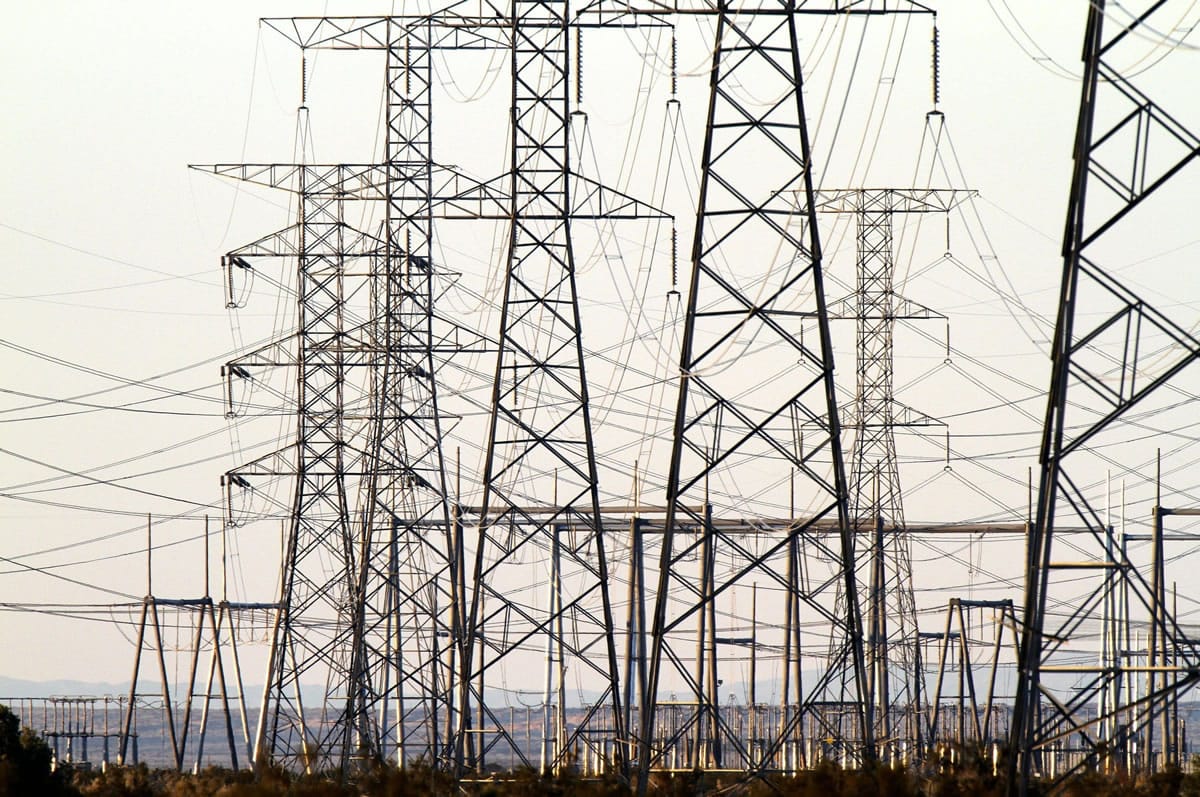Shooters armed with assault rifles and some knowledge of electrical utilities have prompted new worries on the vulnerability of California’s vast power grid.
A 2013 attack on an electric substation near San Jose that nearly knocked out Silicon Valley’s power supply was initially downplayed as vandalism by Pacific Gas & Electric Co., the facility’s owner. Gunfire from semiautomatic weapons did extensive damage to 17 transformers that sent grid operators scrambling to avoid a blackout.
But this past week, a former top power regulator offered a far more ominous interpretation: The attack was terrorism, he said, and if circumstances had been just a little different, it could have been disastrous.
Jon Wellinghoff, who was chairman of the Federal Energy Regulatory Commission when the shooting took place, said that attack was clearly executed by well-trained individuals seeking to do significant damage to the area, and he fears it was a test run for an even larger assault.
“It would not be that hard to bring down the entire region west of the Rockies if you, in fact, had a coordinated attack like this against a number of substations,” Wellinghoff said Thursday. “This (shooting) event shows there are people out there capable of such an attack.”
Wellinghoff’s warning about the incident at PG&E’s Metcalf substation was reported this week by The Wall Street Journal, expanding on a December report by Foreign Policy magazine.
On Friday, several senators called on regulators to review security operations at electrical utilities and consider imposing new rules to protect against future attacks.
“Last year’s sophisticated attack on the Metcalf substation in California’s Silicon Valley was a wake-up call to the risk of physical attacks on the grid. The incident came uncomfortably close to causing a shutdown of a critical substation which could have resulted in a massive blackout in California and elsewhere in the West,” said a letter that was signed by Senate Majority Leader Harry Reid of Nevada and fellow Democratic Sens. Dianne Feinstein of California, Ron Wyden of Oregon and Al Franken of Minnesota. The letter was sent to executives at the Federal Energy Regulatory Commission and the North American Electric Reliability Corp., an industry group that sets rules for how power companies operate.
FBI officials said they are taking the shooting very seriously.
“Based on the information we have right now, we don’t believe it’s related to terrorism,” said Peter Lee, an FBI spokesman in San Francisco. But, he added, “Until we understand the motives, we won’t be 100 percent sure it’s not terrorism.”
Months after the shooting, the bureau has named no suspects.
Potential terrorism scenarios usually involve elaborate cyberattacks, expertly executed hijackings or smuggled nuclear weapons. But concern grows that California may have come unnervingly close to learning that calamity might just as easily be inflicted by a few well-trained snipers.
As law enforcement tries to piece together who fired at the electricity facility, lawmakers and analysts express bewilderment that little is being done to protect against a repeat performance.
“We’ve got a vulnerability and we’ve got to get serious about fixing it,” said Granger Morgan, who heads the Department of Engineering and Public Policy at Carnegie Mellon University. “Almost everything we do in modern society relies on electricity.”
A National Research Council committee he chaired issued a 2007 report warning how easy it would be for a criminal enterprise to knock out the power grid in a way that “could deny large regions of the country access to bulk power systems for weeks or even months,” leading to “turmoil, widespread public fear and an image of helplessness that would play directly into the hands of terrorists.”
The classified report was completed in 2007 and became public in 2012. Asked what has happened since then to protect the nation’s electricity system, Morgan replied that very little has been done.
The attack on the PG&E facility targeted the sophisticated transformers that are at the backbone of the nation’s electricity grid. The giant pieces of equipment are essential, costly and could take months to replace. Knock out enough of them, experts warn, and an entire region can be crippled for an extended period. They are also typically out in the open like sitting ducks.
On that April night, the attackers managed to disable 17 of them just by shooting through a chain-link fence. The bullet holes caused the transformers to leak thousands of gallons of oil, and ultimately overheat. Grid operators scrambled to reroute power from elsewhere to keep the system from collapse. The power stayed on, but just barely, because it happened during a time when demand for electricity was very low.



